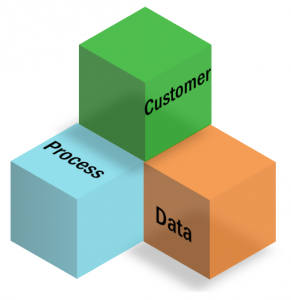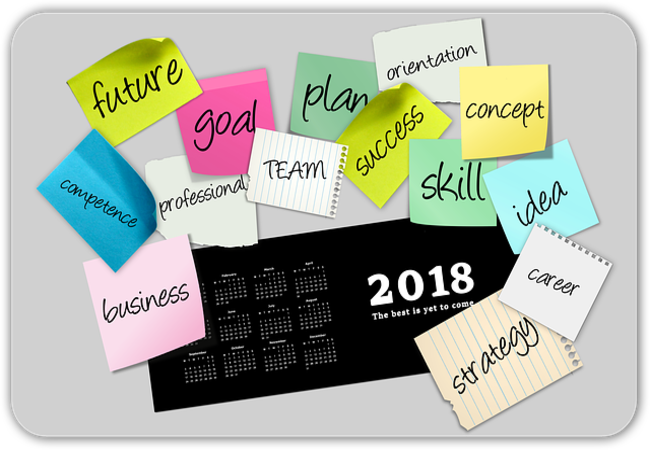Voice of Customer (VOC) is a vital Six Sigma tool that captures customers’ needs, expectations, and preferences through methods like surveys, interviews, and feedback. By systematically gathering and analyzing this data, businesses can identify key drivers of customer satisfaction and areas for improvement. VOC helps prioritize initiatives that directly address customer pain points and desires, ensuring that products and services are aligned with market demands. This customer-centric approach enhances decision-making, drives innovation, and fosters strong customer relationships, ultimately leading to increased loyalty and competitive advantage. It’s a cornerstone for achieving and maintaining high-quality standards.
#nilakantasrinivasan-j #Lean-six-sigma #six-sigma #VOC #voice-of-customer
Tags
Some of the major attributes of CTQ include:
- A single meaning for each metric across all geographic locations.
- Defining the process owners who are responsible for tracking the CTQ.
- Clearly defined defects and opportunities in the process.
- A consistent measurement system to provide accurate and precise measurements.
- And, it must be derived from the VOC so that it provides a strong linkage to the VOC.
Tags
QFD offers several benefits to organizations.
- It reduces design cycle time due to the decrease in design changes.
- It reduces the overall product development time because the focus is solely on satisfying key customer needs.
- It reduces overall cost by reducing design changes.
- It improves customer satisfaction because the development process is driven by the voice of the customer (VOC).
- It rates a product against other products in the market through competitor analysis.
- And, it documents identified competitive marketing strategies.
Tags
Identify
The voice of the customer (VOC) is gathered and converted into technical requirements in this phase. A business case is then established and a project charter is prepared along with milestones. A team is also formed to carry out the project. Roles and responsibilities of the team members are also set during this phase. These activities are accomplished using tools such as Quality Function Deployment (QFD); Failure Modes and Effects Analysis (FMEA); the Suppliers, Inputs, Process, Outputs, and Customers (SIPOC) diagram; the Integrated Product Delivery System (IDPS); target costing; and benchmarking.
Design
In this phase, the concept design is developed by formulating alternative concepts and choosing the best concept after evaluating the alternatives. Risks associated with the chosen concept design are also determined. The functional requirements and their Critical to Quality (CTQ) attributes are identified by the Six Sigma team. The CTQ attributes are deployed after assessing their effect on functional requirements. Raw materials and their procurement plan with the related manufacturing plan are created during this phase. In addition, the Sigma capability is predicted. These activities are accomplished using tools such as smart simple design, risk assessment, FMEA, engineering analysis, materials selection software, simulation, DOE, systems engineering, and the capability of the process is evaluated to verify if the CTQs can be met.
Optimize
The design is optimized for reliability and performance by developing detailed design elements. This helps optimize the Sigma capability and cost. These activities are accomplished through manufacturing database and flowback tools, a design for manufacturability, process capability models, a robust design, Monte Carlo methods, tolerancing, and Six Sigma tools.
Validate
The prototype is tested using formal tools to validate the design. After evaluating the performance, failure modes, and risks of the design, new requirements to be met are sent to manufacturing and sourcing units. The design is iterated until it meets the requirements of the customer. A final phase review to assess the reliability is also carried out to validate the design. The term Verify is also used interchangeably for this phase. These activities are accomplished through accelerated testing, reliability engineering, FMEA, and disciplined New Product Introduction (NPI).
Tags
Define Phase is the first phase of Lean Six Sigma Project. Following are the deliverable of this phase:
- Develop the Project Charter
- Identify the Project CTQ
- Create Process Maps
Develop the Project Charter
Project Charter is an important document that summarizes the purpose, current scenario & goal, measures of success (CTQ), project’s scope, quantitative & indicative project benefits, and team members. This is the most important document, as it creates a term of reference for this entire Lean Six Sigma project. In order to prepare the project charter, several meetings and preparatory steps may be needed. In some cases, gathering the Voice of Customer (VOC) may be required to even understand the problem.
Project Scoping determines exactly how the project will contribute to overall business, whether the efforts will be diverted to maximum impact area, team composition, financial resources required, etc. In Six Sigma, a tool called ‘In-Frame Out-Frame’ is used to decide on the scope.
Six Sigma Green Belt should closely work with the Project Sponsor to complete the Project Charter.
Identify the Project CTQ
CTQ refers to Critical to Quality metric. This is a measure of success for the project. Usually, there is only one CTQ for DMAIC projects. It can either be a measure of efficiency or effectiveness. However, it is a key performance indicator for Voice of Customer or Voice of Business. Further, it should be measurable. Usually, its indicative or accurate current performance is reported in the project charter.
The above two deliverable run parallel, and they are of significant importance because they mark the formal kick-off of the project, team member induction, Lean Six Sigma training (if not included earlier).
Create Process Maps
In order to understand the end-to-end process; a detailed process document is created by the team. However, in case such documentation already exists, then it becomes easy for the project team members to revisit it.
Six Sigma Green Belt can involve all her team members in this activity. Two best ways of mapping a process are to interview all the parties involved in the process or to conduct a work-out session with all parties. Latter requires good facilitation skills.
Once the process maps have been created, the team can use them to identify the bottlenecks, challenges, issues, inputs & outputs, delays, etc. Essentially, it can be used to decide which part of the process is important, and needs to be introspected.
On completion of the above deliverable, a formal define tollgate review is conducted. Then the project moves to Measure Phase. Next >>>
Tags
While the deployment of Six Sigma depends on several factors; the following approach explains Six Sigma process in its simplest form.
Six Sigma as a management discipline puts customer’s interest ahead of others. The process of gathering customer requirements is called as Voice of Customer (VOC). A good deployment program starts with VOC. Customer requirements directly translate into business performance standards. In Six Sigma and many quality management approaches, these performance standards are called as Customer Specification Limits.
Operational metrics and performance measures like KPIs are created based on customer requirements. Such operational measures or KPIs are called as Critical To Quality (CTQ) metrics in Six Sigma.
Output of existing processes is measured against customer requirements. This becomes a benchmark of performance. In Six Sigma, this step is called as Assessment of Current Process Capability.
In case an end-to-end process is not capable of consistently meeting customer requirements, and produces high volume of defects; it is taken up for improvement.
Process improvement approach used in Six Sigma is called as DMAIC. It is the acronym of Define, Measure, Analyze, Improve and Control: a 5 step improvement approach.
In this manner, Six Sigma aims to link Customers, Business Processes, CTQs and process improvement all together.
The real power of a Six Sigma Process is in consistently and iteratively following the above activities.
Thus, an organization following a Six Sigma Process:
- Systematically and regularly gathers VOC
- Measures its process capability
- Identifies improvement opportunities
- Uses DMAIC to improve its processes
Tags
Six Sigma has evolved as a management discipline for improving processes, and providing customer delight. Some organizations like GE had adopted Six Sigma as their management philosophy.
So, Why Six Sigma? Why not follow other approaches like TQM, SCM, COPC, ISO, etc.
Let’s understand why many organizations choose Six Sigma over other approaches; and how they benefited.
There are 3 key salient features of Six Sigma that are noteworthy:
- Customer Centricity
- Process Orientation
- Fact Based Decision Making
Customer Centricity
While the emphasis on building business processes to meet customer requirements was first proposed by Joseph Juran & Edward Deming (fathers of modern Quality movement); it was taken seriously only with the advent of Six Sigma. Gathering the Voice of Customer and translating these requirements into product features, aka Quality Function Deployment (QFD), were loosely used in TQM. Whereas, in Six Sigma Voice of Customers (VOC) is the starting point.
Operational measures and performance measures (KPIs) are built based on VOC. These measures are called as CTQ (Critical To Quality). Customers’ needs constantly change. Such changing needs mean that processes also need to adapt and evolve. Six Sigma enables achieving this adaptation. While creating a new product or service line; the entire system is built to meet customer requirements. Such an approach is called as Design for Six Sigma (DFSS).
Process Orientation
Six Sigma builds strong process orientation within the organization. In Six Sigma, virtually every department, activity, or task is perceived as a process in itself or process step. What does that mean? It means a lot!
Every process produces few outputs, and in turn; requires few inputs. Outputs are consumed by Customers (internal or external); and inputs are provided by Suppliers. Such visualization is called as SIPOC in Six Sigma. This helps organizations to move away from the mind-set of fixing people when things don’t work; to fixing processes. In order to improve the outputs of any process or department, its process steps and inputs needs to be improved, and sometimes suppliers need to be educated. People are never penalized in Six Sigma!
Traditionally many industries & functions are regarded as ‘people’ driven. For instance, industries such as Hospitality, Entertainment & most service lines and functions such as HR, Marketing, Sales, Admin. Six Sigma organizations treat these as just another process. As a result, the dependency on individuals is also reduced. Organizational silos are challenged and processes are simplified.
Driving strong process orientation across the organization has resulted in unbelievable tangible and intangible benefits to customers and organizations. GE is a pioneer in driving process orientation in its Financial Service businesses.
Fact Based Decision Making
Once organizations establish process orientation; access to data and factual information will increase. This presents the next big opportunity for organizations. Across levels, organizations are dependent on their managers to take right decisions. Most often, these decisions are punctuated by decision maker’s bias and personal intuition. Wrong decisions are costly and usually borne by the organization.
Six Sigma’s bouquet of tools enables data or fact based decision making. This means the overall management is much more efficient and accurate. DMAIC, an acronym for Define, Measure, Analyze, Improve and Control, is a method used for solving problems. There are over 50 qualitative and quantitative tools which are part of DMAIC. These tools can be applied in several stand-alone situations too. These tools enable data or fact based decision making.
At a personal level, an individual practicing Six Sigma over a period time is more efficient and effective than her peers. This has direct impact on career and growth prospects.
Thus Six Sigma is a powerful approach which is not only beneficial to organizations; but also to individuals.
If you are interested in Six Sigma Certification Courses, visit our products page. Click here






